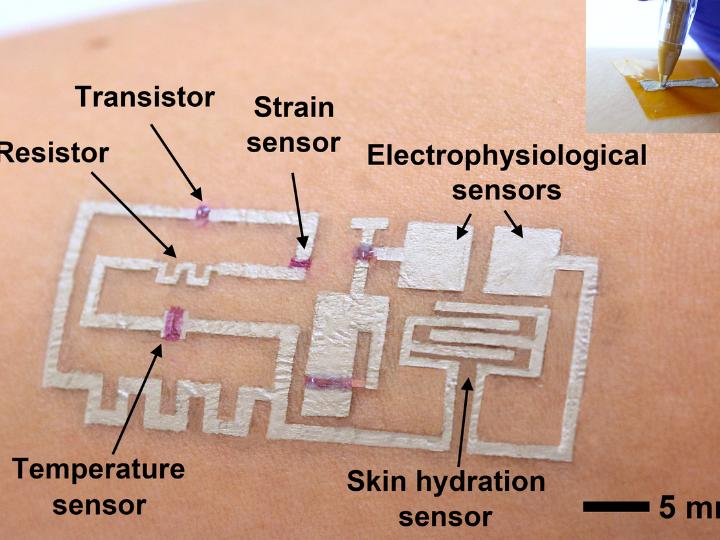In the time BC—before COVID—digital and IRL workouts were like the David and Alexis Rose of the fitness world—constantly at odds with each other. Most people were either living room workout warriors or swore that they would never give up their gym memberships or studio passes. There were plenty of online-only offerings out there (Mirror, Obé, and Aaptiv, for example) but many major brands stayed true to their brick and mortar roots (Barry’s, for one). But as stay-at-home orders forced us all to embrace the practice of working out at home, it has paved the way for a future “omnichannel fitness”—in which brands have begun to offer fitness classes via both their online platforms and in brick and mortar locations—proving that it is possible for digital and IRL fitness to get along.
In the early days of quarantine, studios across the country rushed to bring their offerings online. Cult-favorites like Barry’s Bootcamp, Solidcore, Orangetheory Fitness, SLT, and AARMY all managed to go digital within the first month of the pandemic, keeping their communities engaged when going into a studio wasn’t an option. But now that gyms across the country have started to re-open (for better or worse), the digital way of working out doesn’t seem to be going anywhere. According to a June survey conducted by FitGrid, 95 percent of the 2,000 studios polled will continue to offer both digital and in-studio classes once they are fully re-opened.
“Hybrid memberships—where you can do both—is going to be an important trend,” says Mindbody CEO Rick Stollmeyer [Editor’s note: Stollmeyer announced he was stepping down from his position as CEO shortly after our interview, effective August 1.] “We think virtual wellness is here to stay, and that will broaden and deepen the market by introducing people to practices they haven’t tried before. But we also think that face-to-face experiences will continue to be valuable to people, and maybe even be more valuable after we’ve experienced this period of being shut in.” With full-time remote work on the horizon for many companies, he expects people to turn to their fitness and wellness practices as a way to connect with others.
As COVID-19 has driven gyms across the country to close—both Gold’s Gym and 24 Hour Fitness have filed for bankruptcy and shuttered multiple locations—Stollmeyer believes that “brick and mortar business must have a digital extension” in order to survive. “We’re going through a period where consumers will be uncomfortable getting back into small studios, and studios themselves may have to go through up-and-down periods of lockdown,” says FitGrid founder and CEO Ntiedo Etuk, adding that thanks to social distancing measures, even studios that are open will have to operate at a limited capacity. “These studios were built on business models that required a 70 percent occupancy rate for their classes in order to be profitable, so that means their online components are going to have to make up for that,” he says.
“Due to shelter-in-place orders, digital fitness has skyrocketed over the past few months, and many consumers are apprehensive about returning to the gym due to the risk of the virus,” says Cynthia Janelli, the GVP of global strategy at marketing technology firm Zeta Global. “Many knew digital’s dominance was inevitable, but the virus has accelerated this transition exponentially by bringing digital to the forefront. Retailers can no longer ignore that a data-first approach gives them a substantial competitive advantage. Brands and marketers must be prepared to make the most out of digital right now to survive the recession and come out stronger on the other side.”
Looking ahead, you can expect to see your favorite studios offering memberships that give you access to both their digital offerings and IRL classes. “I think people were kind of in one camp or the other before…but now it’s not an either/or—it’s what I call a hybrid model,” says David Miller, the executive director of the Center for Innovation and Entrepreneurship at George Mason University’s School of Business. “When you look at what’s emerging, people are now more open [to doing both], and are going to mix and match.”
To be clear, the omnichannel models have previously existed…and thrived. Boutique studios like Tracy Anderson, AKT, and Exhale have long been in the game, and Peloton—which launched its bike and digital classes in 2014—opened its flagship last year. But now, many more studios are going to be following suit. “This is the new age, and an omnichannel approach to fitness is here to stay,” said Barre3 CEO and co-founder Sadie Lincoln at the Well+Good TALK in May. “Anyone with a brick and mortar is looking at how to leverage both the in-person and online program as an ecosystem. Nothing can replace being in person—with that beat and the music and being with your instructor and fighting loneliness together—I don’t think that’s going to go away, but I think it’s going to be augmented with digital in an important, powerful way.”
More than anything, the new hybrid model offers an unprecedented level of access for people who can’t get into studios because of cost, geography, or time constraints. Digital fitness is notoriously less expensive than in-person classes thanks to a lower overhead that allows people to tune into programming from anywhere, at any time. “Our approach is very much [that] in the future, [we have an] omnichannel business where we’re able to leverage the brand and able to connect with people in places where brick and mortar doesn’t exist,” Barry’s CEO Joey Gonzalez said at the Well+Good TALK. “I think there’s a great advantage to having both a brick and mortar and digital presence because you can build and foster this sense of community that customers can tap into when they’re gone. Not only during a pandemic situation but when people are [traveling]—people are really excited about having this opportunity to stay connected.”
The pandemic has undoubtedly changed fitness forever, but in proving that digital and IRL classes can coexist, we’d say it’s for the better.

